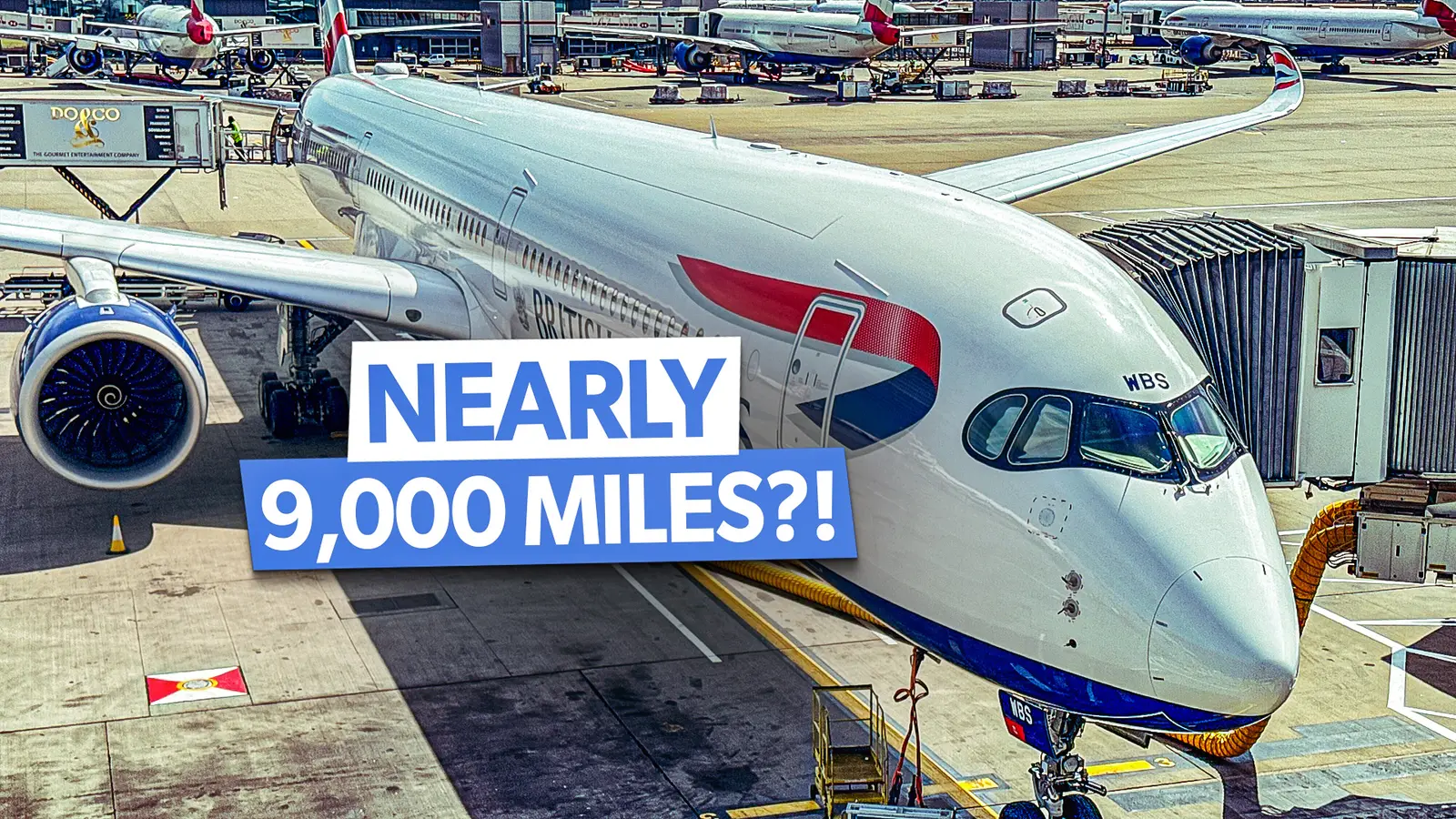Copyright Simple Flying

London Heathrow Airport remains one of the busiest and most globally connected airports in the world, serving as a major hub that links the United Kingdom to every inhabited continent. In 2025, Heathrow continues to operate as a cornerstone of long-distance travel, boasting an expansive network of ultra-long-haul routes that bridge immense geographic distances across the globe. These flights stretch across multiple time zones, connecting Londoners and international travellers alike to distant destinations in Asia, Australia, and both North and South America. Covering thousands of miles, these routes are celebrated as feats of endurance and engineering, with leading airlines deploying their most advanced aircraft, such as the Airbus A350 and Boeing 787 Dreamliner, to deliver maximum fuel efficiency, reliability, and passenger comfort over exceptionally long sectors. From Sydney to Santiago and Singapore to São Paulo, these nonstop journeys not only highlight technological progress in modern aviation but also underscore the economic, diplomatic, and cultural importance of Heathrow as a global gateway. They facilitate international trade, tourism, and corporate mobility, while also strengthening global relationships and enabling new opportunities for cultural exchange. In a world where seamless connectivity is increasingly essential, Heathrow’s role in sustaining one of the most impressive ultra-long-haul networks on the planet continues to grow in significance. Here, we explore some of the longest nonstop routes from London Heathrow in 2025, shining a spotlight on the airlines, destinations, and extraordinary distances that define this remarkable web of global connections. London–Perth: The Longest Of Them All Qantas’ Heathrow–Perth (PER) flight remains Heathrow’s single longest nonstop route in 2025, an astonishing 8,988 miles in length. This direct connection between the UK and Australia’s west coast continues to redefine what’s possible in commercial aviation. Operated daily using the Boeing 787-9 Dreamliner, the service bridges two hemispheres without a single stop, cutting several hours off the traditional transit via another hub such as Singapore, Dubai, or Doha. The route, which offers just over 86,000 seats annually, is designed for endurance and comfort, featuring optimized cabin layouts and reduced capacity to strike a balance betweenweight and range. It’s a cornerstone of Qantas’ long-range ambitions, paving the way for the upcoming Project Sunrise missions, direct London–Sydney and New York–Sydney services that will soon take ultra-long-haul flying to new extremes. "Project Sunrise will deliver more direct routes to Australia, significantly reduced point-to-point travel time (up to four hours compared with 1-stop flights) and a flying experience second to none – with a cabin interior and service design influenced by medical and scientific research carried out on research flights." For now, the Heathrow–Perth sector stands as a symbol of human achievement in aviation: a direct link across the planet that connects two distant cities in under 17 hours, proving just how small the world has become. 7,000–8,000 Miles: Deep South America And Southeast Asia Routes in this mileage range demonstrate Heathrow’s reach into the Southern Hemisphere and Southeast Asia. British Airways’ Heathrow–Santiago (SCL) flight covers about 7,227 miles, making it one of the longest in the BA network. Linking the UK with Chile’s capital, this route is crucial for trade, mining industry travel, and leisure connections across South America. Another standout is Singapore Airlines’ Heathrow–Singapore (SIN) service at 6,764 miles, offering one of the most prestigious long-haul experiences in the world. With over 1,400 annual flights and millions of Available Seat Miles (ASMs), this route serves as a key bridge between Europe and Southeast Asia, often continuing onward to Australia. Qantas also contributes a smaller share of flights on this same corridor. These ultra-long links are technological and logistical marvels, pushing every aspect of aviation to its limits. They demand meticulous route planning, with airlines carefully calculating winds, jet streams, and alternate airports to ensure both safety and efficiency on journeys that can exceed 17 hours. Aircraft such as the Boeing 787 Dreamliner and Airbus A350 are at the heart of this achievement, combining advanced aerodynamics, lightweight composite materials, and ultra-efficient engines that make such missions economically feasible. 6,000–6,500 Miles: East Asia And The Far Pacific In the 6,000-mile range, Heathrow connects directly with East Asia’s major cities, including Hong Kong (HKG), Tokyo (HND), and Bangkok (BKK). The Heathrow–Hong Kong sector, operated by Cathay Pacific (CX) and British Airways (BA), stretches roughly 5,995 miles, remaining a powerhouse route despite recent market shifts. Cathay alone operates over 1,800 flights annually, usually utilizing the Boeing 777-300ER and Airbus A350-1000, underscoring the importance of this global financial corridor. Similarly, the Heathrow–Tokyo Haneda (HND) flights by All Nippon Airways (NH) and Japan Airlines (JL) average around 5,974 miles, symbolizing the deep business and cultural ties between Japan and the UK. Together, these carriers run nearly 1,100 flights a year, providing premium connectivity for executives, tourists, and cargo alike. Rounding out this group is Thai Airways’ Heathrow–Bangkok (BKK) service at 5,976 miles utilizing the 777-300ER. It’s a vital leisure route, connecting Europe to Southeast Asia’s top tourism hub, and one of the most established long-haul operations in Heathrow’s schedule. 5,500–6,000 Miles: Greater China And Northeast Asia This range captures routes linking London to the heart of East Asia and China’s growing network of secondary hubs. The Heathrow–Shanghai (PVG) flights by British Airways (BA) and China Eastern Airlines (MU) sit just under 6,000 miles, connecting two global financial centers with strong trade and cultural ties. Vietnam Airlines’ Heathrow–Hanoi (HAN) and Ho Chi Minh City (SGN) routes, both around 5,700–5,900 miles, further demonstrate the growing importance of Southeast Asian markets to the UK. Carriers such as China Southern (CZ) and Hainan Airlines (HU) extend Heathrow’s reach to cities like Guangzhou (CAN), Haikou (HAK), and Changsha (CSX). While these routes don’t always operate daily, they significantly expand Heathrow’s footprint in China’s rapidly developing aviation sector. These flights illustrate how long-haul demand has diversified, shifting from traditional mega-hubs toward regional centers that balance trade, education, and tourism. As China and Vietnam continue to expand globally, these mid-6,000-mile connections are set to grow even more crucial. 5,000–5,500 Miles: The Americas And The Atlantic Rim While shorter in distance, these routes form the core of Heathrow’s long-haul traffic, combining frequency, demand, and strategic importance. The Heathrow–Los Angeles (LAX) service, at 5,456 miles, is one of the busiest long-hauls on earth, shared by British Airways (BA), Virgin Atlantic (VS), American Airlines(AA), and United Airlines (UA). BA alone operates over 1,000 annual flights, serving business travellers, Hollywood traffic, and tourists alike. The importance of this route is highlighted through the frequency of the route alongside the number of airlines providing this route. Most notably, British Airways still utilize their Airbus A380-800 on this route, showcasing the demand this route provides. Further south, British Airways’ Heathrow–São Paulo (GRU) and Rio de Janeiro (GIG) flights, both around 5,800 miles, connect Europe with South America’s largest economy. These services are essential for corporate travellers in finance, energy, and trade, reinforcing London’s global business links. Additionally, mid-range long-hauls like Heathrow–New York (JFK), Toronto (YYZ), and Dubai (DXB), all between 3,400 and 3,600 miles, remain Heathrow’s bread and butter. Though shorter, they boast multiple daily frequencies, underpinning Heathrow’s reputation as one of the world’s busiest intercontinental gateways. How These Ultra-Long Routes Are Possible The ability to operate nonstop flights spanning 7,000 to 9,000 miles is the result of advances in aircraft technology, fuel efficiency, and operational design. Modern aircraft like the Boeing 787 Dreamliner and Airbus A350 are central to this revolution, featuring lightweight composite structures, aerodynamic refinements, and engines that burn up to 25% less fuel than their predecessors. Equally important are improvements in crew management and passenger well-being. Airlines optimize cabin pressurization, humidity, and noise levels to combat fatigue on 17-hour flights. Dual or triple flight crews rotate in dedicated rest compartments, ensuring compliance with international safety regulations while maintaining alertness throughout marathon operations. Finally, route optimization and real-time data analytics allow carriers to adjust flight paths dynamically for tailwinds, weather, and fuel savings. Combined with meticulous load planning, these innovations make ultra-long-haul flights not only possible, but profitable, reliable, and increasingly comfortable for passengers who now think nothing of flying halfway around the world without stopping.



